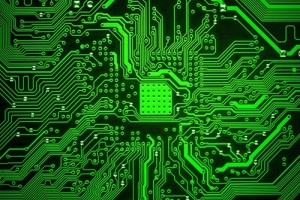Online - PCB design course in pune

Advanced PCB Design Course Structure
Module 1: Introduction to Advanced PCB Design
- Overview of PCB Design Principles
- Importance of Advanced PCB Techniques
- Industry Standards and Regulations
Module 2: PCB Design Software
- Introduction to Popular PCB Design Tools (e.g., Altium Designer, Eagle, KiCad)
- Advanced Features of PCB Design Software
- Setting Up Your Design Environment
Module 3: Schematic Design
- Creating and Managing Schematics
- Symbol Libraries and Footprints
- Design Rule Checks (DRC) and Electrical Rule Checks (ERC)
Module 4: Layout Techniques
- Advanced Layout Strategies
- Layer Stack-up Considerations
- Placement Techniques for High-Speed Designs
- Routing Strategies for Complex Circuits
Module 5: Signal Integrity and EMC
- Basics of Signal Integrity
- Identifying and Mitigating Noise Issues
- Techniques for EMI/EMC Compliance
- Grounding and Power Distribution Considerations
Module 6: High-Speed PCB Design
- Design Techniques for High-Speed Circuits
- Impedance Control and Matching
- Using Differential Pairs
- Simulation Tools for High-Speed Design
Module 7: Thermal Management
- Importance of Thermal Management in PCB Design
- Techniques for Heat Dissipation
- Thermal Simulation Tools and Methods
Module 8: Design for Manufacturability (DFM)
- Understanding DFM Principles
- Common Manufacturing Issues and Solutions
- Collaborating with Fabricators
Module 9: Prototyping and Testing
- Creating Prototypes from Your Designs
- Testing and Validation Methods
- Tools for PCB Testing (e.g., Multimeters, Oscilloscopes)
Module 10: Project Work
- Capstone Project: Design and Prototype an Advanced PCB
- Peer Review and Feedback Sessions
- Final Presentation of Projects
Module 11: Career Opportunities and Industry Trends
- Overview of Career Paths in PCB Design
- Current Trends and Innovations in PCB Technology
- Networking and Professional Development Opportunities
Course Delivery Format
- Duration: 8-12 weeks (flexible based on depth)
- Format: Online / One TO One Session
- Assessment: Quizzes, Assignments, and Final Project
Recommended Prerequisites
- Basic Knowledge of Electronics
- Familiarity with Basic PCB Design Concepts
- Previous Experience with PCB Design Software (optional but beneficial)
why learn PCB design ?
Printed circuit boards are electronic circuits boards created for mounting electronic components on a non conductive board, and for creating conductive connections between them. The creation of circuit patterns is accomplished using both additive and subtractive methods. The conductive circuit is generally copper, although aluminum, nickel, chrome, and other metals are sometimes used. There are three basic varieties of printed circuit boards: single‐sided, double‐sided, and multi‐ layered.
1. Single sided PCB: conductors on only one surface of a dielectric base.
2. Double sided PCB: conductors on both sides of a dielectric base, usually the two layers are interconnected by plated‐through‐holes (PTHs).
3. Multi‐layer: conductors on 3 or more layers separated by dielectric material and the layers are interconnected by PTH or pads
4 layer PCB is a sandwich of 2 double layered PCBs.
Likewise 6 layer PCB is a sandwich of 3 double layered PCB. This sandwiching is done by placing oxidizing material between double layered PCBs. The spatial and density requirement, and the circuitry complexity determine the type of board to be produced.
